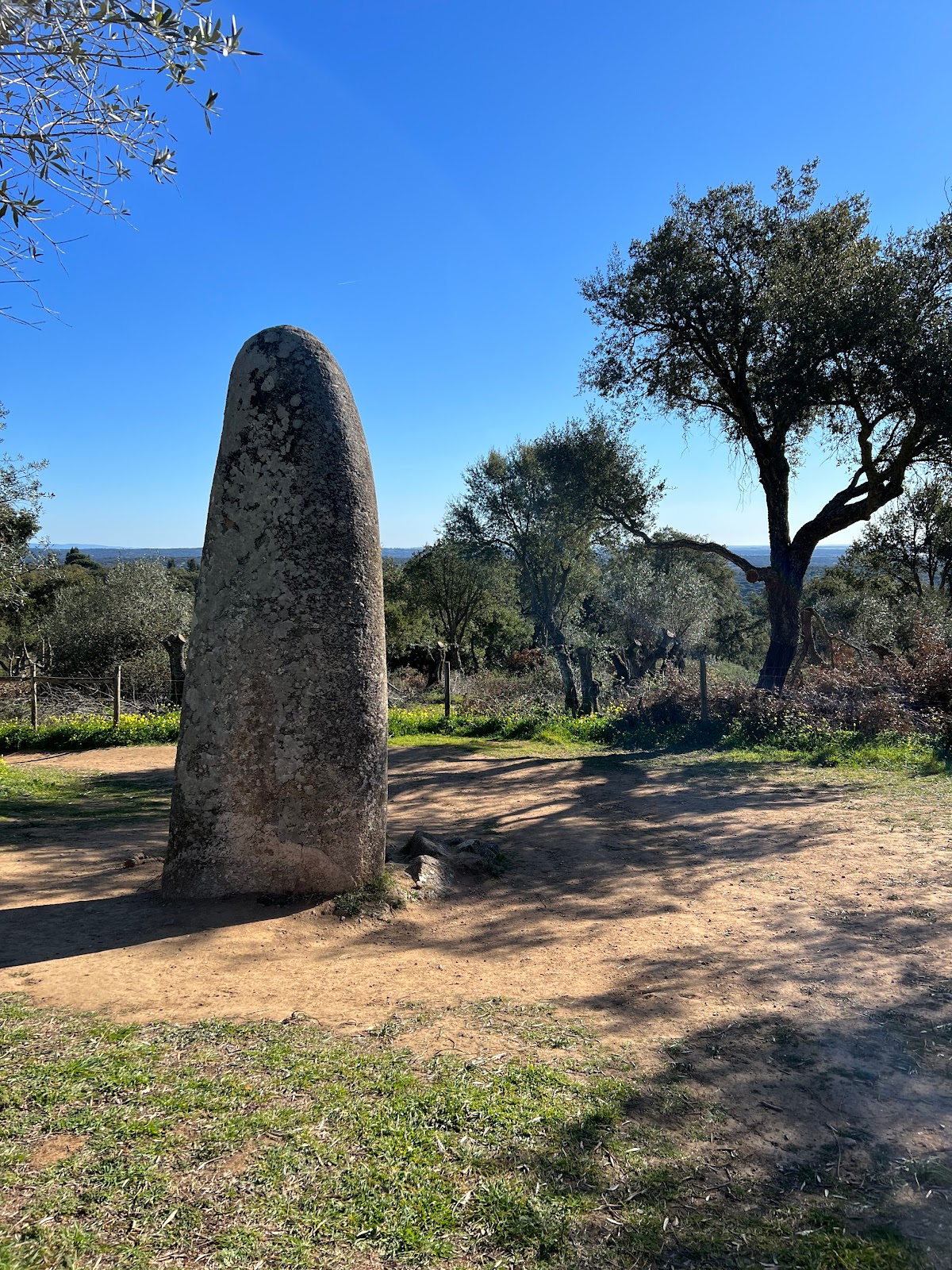In pursuit of ancient megoliths this morning, I had a real taste of how gorgeous the Alentejo region of Portugal is. The area around Evora has a large concentration of megoliths -- old stone monuments (think Stonehenge) -- within a very short drive from one another. The Almendres Cromlech was my first stop, and to get there, I drove through a gorgeous cork farm where large cows and other farm animals grazed under the cork trees.
You can tell the tree is a cork tree because you can see the line where the cork oak's bark has been harvested for cork and the area above that where the bark was left alone. The cork oak is unique in that it can have its bark stripped off like that and continue to grow and regrow the bark for future harvesting.
Portugal supplies most of the world's cork and of that, 70% is used to make wine stoppers. Cork is a renewable resource and I can tell you that there's no need to search for a screw-cap wine here. They are very loyal to this industry that has been in force since the Middle Ages, when laws were first put in place to prohibit cutting down a cork oak.
The Almendres Cromlech is a 100+ stone arrangement of upright rocks in a large oval on an east-facing hillside in the middle of a cork farm. It's pretty easily reached by car and a short walk, and there you are, amid rocks placed there 7000+ years ago (yes, 2,000 years before Stonehenge). Speculation about the arrangement of rocks is that they are part of a solstice sun-moon-stars tribute. But of course no one really knows.
On the way there, there's a small gap in the field that leads to the Almendres menhir (which is one upright rock). That was a bit of a trek on what was variously a rut and a narrow path that cut through the cork fields (that hillside with the yellow flowers in the first picture is what surrounds that rut). The menhir is maybe 7 feet tall.

The final megalithic monument I went to was a Dolmen, the Anta Grande Do Zambujeiro, which was a burial cave that has been dated at 3200 BCE. You can't enter the cave (not that I would have wanted to!) but the entrance is now protected by a roof which takes away a bit from the effect of huge slabs of rock. The estimate is that there were several chambers where 100s of ancients were buried. The road to that site was extremely cratered and if you were to bike or to go in a Mini Cooper sized car, you'd do well to park before the road turns off and walk. It's beautiful anyway you get there. There is a Megolith Circuit Tour you can self-guide (which is what I did) and there are plenty of tour guides/companies who will take you there (none of whom where there, fortunately for me, when I was).
There's an interpretive site with a trail and signage in the village where the road to the Almendres Cromlech is located, which also has good info on plant and animal life in the region.
Rather than head back to Evora right away, I took the road North of the town to see Arriolos. I'd read about Arriolos when I was considering coming to this area, and the town is known for rugs. The story is that the Moors brought rug-making to the region during their rule in the Iberian peninsula and rug-making continued well beyond the years after the Moors were expelled. That Persian rug-making technique lasted until the 19th century, when it fell out of favor... until the 20th century, when some local women revived the rug-making industry in Arriolos. The town has a long, charming, pedestrian shopping street that has store after store of rugs, all of which have a kind of needlepoint style and range in design from some older patterns to some with birds and animals to some pretty modern things. To a one, no rug store in Arriolos has an English-speaking person working there! So I can only tell you what I saw and what I've read -- no conversation with any of these local artisans. Arriolos has some beautiful churches and tiled buildings, but as it was Sunday, I didn't go into any. There's also a very dramatic Moorish castle, maybe to see on a future visit.
It was time for me to head back to Evora to do some painting. I set up next to the 1st Century Roman temple and, as the snack bar in the park was closed, there wasn't a whole lot of activity around it this afternoon.











Comments
Post a Comment